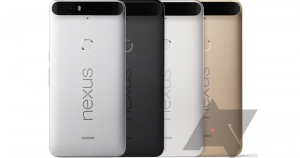Share This
Related Posts
Tags
Nexus 6P
By Anca Gagiuc on Nov 10, 2015 in Technology
Google’s handset family welcomed a sibling that’s first of its kind: first one made of metal, first one made by Huawei, and the first one to include fingerprint reader and Android 6.0 known as Marshmallow.
Nexus 6P is the new 5.7-inch device compatible with all major carriers, besides Google’s own unique Google-Fi wireless service that allows the user to transition between carriers without swapping hardware. The “P” in the name stands for Premium—due to its metal unibody design that’s placing it in direct competition with the aluminum iPhone 6S Plus and glass-and-metal infused Samsung Galaxy Note 5.
It’s relieving to see how Huawei built the 6P to look and feel different than any other Google-commissioned phone—ditching the cheap plastic in the Nexus 5X (built by LG) for the metal design. At 5.27 x 3.06 x 0.28 inches, the device is slightly taller than Nexus 6, but notably narrower and thinner.
Furthermore, even though Huawei raised the bar on the phone’s specs, Nexus 6P weighs only 6.27 ounces; the way they’ve fit everything in though is another story—the 12.3MP camera creates an unsightly-looking rear bulge with a black strip where the lens, flash, and an array of antennae are positioned; luckily this seems to be the only eyesore aspect of the device.
On the bottom of the phone sits a reversible USB-C port, replacing the micro USB in favor of faster charging. A 3.5mm headphone jack sits at the top and the stereo speakers are now placed to the front.
Nexus 6P has an AMOLED display with 2,560 x 1,440 resolution at 518ppi, looking brighter and more colorful than the previous Nexus 6, but also extremely saturated. On the exterior, Nexus 6P comes in the traditional white, silver and black.
The 12MP camera shoots sharp, picking up details and shadows very well, thanks in no small part to Sony’s fantastic camera sensor. There are also a few camera tricks: the power button—when double-clicked, it launches the phone into photo mode; there is a new burst mode for taking quick consecutive shots, perfect to convert into GIFs.
Inside runs a powerful 2GHz quad-core Qualcomm Snapdragon 810 processor and 3GB of RAM, a necessary combination for all those new Marshmallows features. Additionally, Nexus 6P includes the Android Sensor Hub, a dedicated motion chip that drives all sensors on the phone. It manages orientation and motion tracking tasks without taxing the processor while going hand-in-hand with the battery-saving Android Marshmallow Doze feature.
The non-removable 3,450mAh battery requires no charge throughout the day; however, should the need arise, the USB-C cord provides a quick charge. The fingerprint sensor, placed on the back of the phone, proves to be really snappy and without problems. Storage-wise, users can choose from 32GB, 64GB, and 128GB; mind that the microSD slot is absent.
Google and Huawei have built a phone with no problems whatsoever. It’s well-made, it’s fast, it has a great camera, and good software. Everything Google could do, it did, now it’s up to the developers to pick it up and build something worthy of the phone. It is the best Nexus phone ever. And it’s also cheaper than nearly all its competitors: it starts at $499 for a 32GB model, bumps up to $549 for the 64GB one, and tops out at $649 for the 128GB model.
